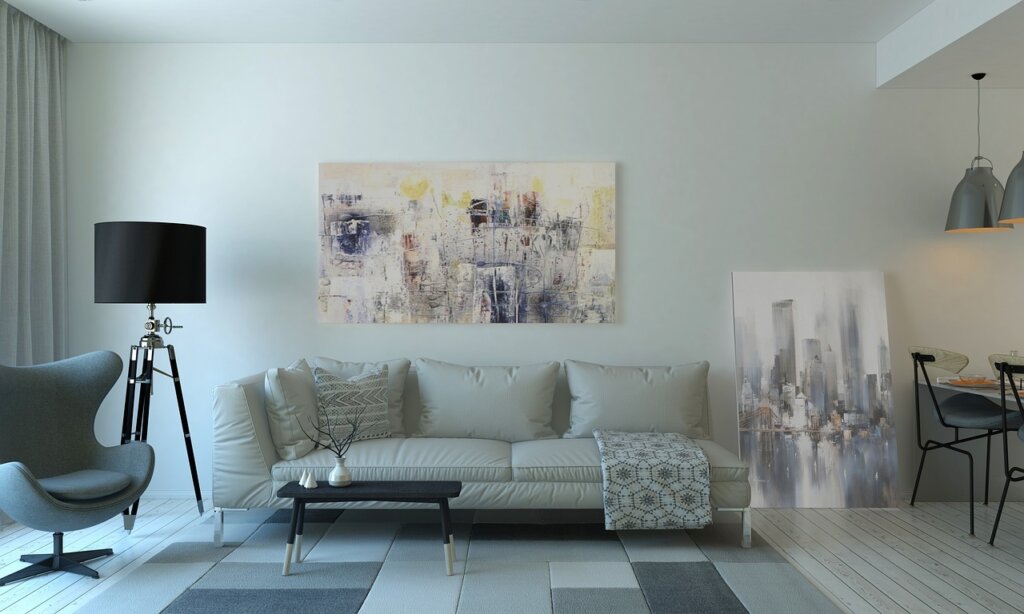As a writer, I spend a lot of time at my desk, typing away on my computer. I’ve come to realize that the lighting in my office plays a huge role in my productivity and mood. When it’s too bright, I get headaches and feel irritable. When it’s too dim, I feel sleepy and unmotivated. This got me thinking about the connection between lighting and mood in our homes. How does lighting impact our mental health and overall well-being? In this article, we’ll explore the science behind how lighting affects mood, the role of lighting in creating a comfortable home environment, and how lighting can be used to enhance humor and creativity.
The Science Behind How Lighting Affects Mood
Lighting has a direct impact on our circadian rhythm, which is our body’s natural sleep-wake cycle. Our bodies are designed to be awake during the day and asleep at night. Bright light, especially natural sunlight, helps keep us alert and awake during the day. Dimmer light, on the other hand, signals to our bodies that it’s time to wind down and prepare for sleep.
Studies have shown that exposure to bright light during the day can improve mood and cognitive performance, while exposure to dimmer light in the evening can disrupt sleep and lead to depression and anxiety. Artificial light, such as that from electronic devices, can also disrupt our circadian rhythm and negatively impact our mood.
The Impact of Lighting on Mental Health
The connection between lighting and mental health is well-established. Seasonal Affective Disorder (SAD), a type of depression that occurs during the winter months, is often treated with bright light therapy. Exposure to bright light has been shown to increase levels of serotonin, a neurotransmitter that regulates mood and happiness.
Conversely, exposure to dimmer light has been linked to depression and anxiety. A study published in the Journal of Affective Disorders found that individuals with major depressive disorder had significantly lower exposure to bright light during the day and higher exposure to artificial light at night compared to healthy controls.
The Role of Lighting in Creating a Comfortable Home Environment
Creating a comfortable home environment is all about balancing function and aesthetics. Lighting plays a crucial role in achieving this balance. The right lighting can make a room feel warm and inviting, while the wrong lighting can make it feel cold and sterile.
One way to create a comfortable home environment is to layer lighting. This involves using multiple light sources, such as overhead lights, table lamps, and floor lamps, to create a variety of lighting levels. This allows you to adjust the lighting to suit different activities, such as reading or watching TV.
How Lighting Can Be Used to Enhance Humor and Creativity
Lighting can also be used to enhance humor and creativity. In a study published in the Journal of Environmental Psychology, researchers found that participants in a brightly lit room were more likely to choose a humorous caption for a cartoon than participants in a dimly lit room. Bright light has also been shown to enhance creativity and problem-solving skills.
If you’re looking to boost your creativity, consider adding a bright desk lamp to your workspace. Or, if you want to create a cozy and inviting atmosphere, try using warm, dim lighting in your living room.
Choosing the Right Lighting for Your Home
Choosing the right lighting for your home can be a daunting task. With so many options available, it can be difficult to know where to start. One way to narrow down your options is to consider the function of the room. For example, a kitchen may require bright, task lighting for cooking and food prep, while a bedroom may benefit from soft, dim lighting for relaxation.
It’s also important to consider the style of your home and your personal taste. If you prefer a modern, minimalist look, you may want to opt for sleek, simple lighting fixtures. If you prefer a more traditional or eclectic look, you may want to choose lighting fixtures with more ornate details.
Lighting Trends and Styles for Different Rooms in the Home
Lighting trends and styles are constantly evolving. In recent years, there has been a shift towards more energy-efficient and sustainable lighting options, such as LED bulbs. There has also been a resurgence of vintage and industrial-style lighting.
When it comes to different rooms in the home, there are certain lighting styles that work better than others. For example, pendant lighting is a popular choice for kitchen islands and dining tables, while recessed lighting is often used in living rooms and bedrooms.
DIY Lighting Projects to Personalize Your Space
If you’re feeling creative, there are plenty of DIY lighting projects that can help you personalize your space. One popular project is the mason jar chandelier, which involves stringing together several mason jars and adding a light bulb to each one. Another fun project is the wine bottle lamp, which involves drilling a hole in a wine bottle and adding a light kit.
Working with a Lighting Professional
If you’re feeling overwhelmed by the task of choosing the right lighting for your home, consider working with a lighting professional. A lighting designer can help you create a lighting plan that suits your needs and style. They can also help you choose the right fixtures and bulbs to achieve your desired look and function.
Conclusion
In conclusion, lighting plays a crucial role in our mood and well-being. By understanding the science behind how lighting affects mood, we can make informed choices about the lighting in our homes. Whether you’re looking to create a cozy and inviting atmosphere or boost your creativity and humor, there are plenty of lighting options available to help you achieve your goals. So, take some time to evaluate the lighting in your home and make adjustments as needed. Your mood and mental health will thank you.





